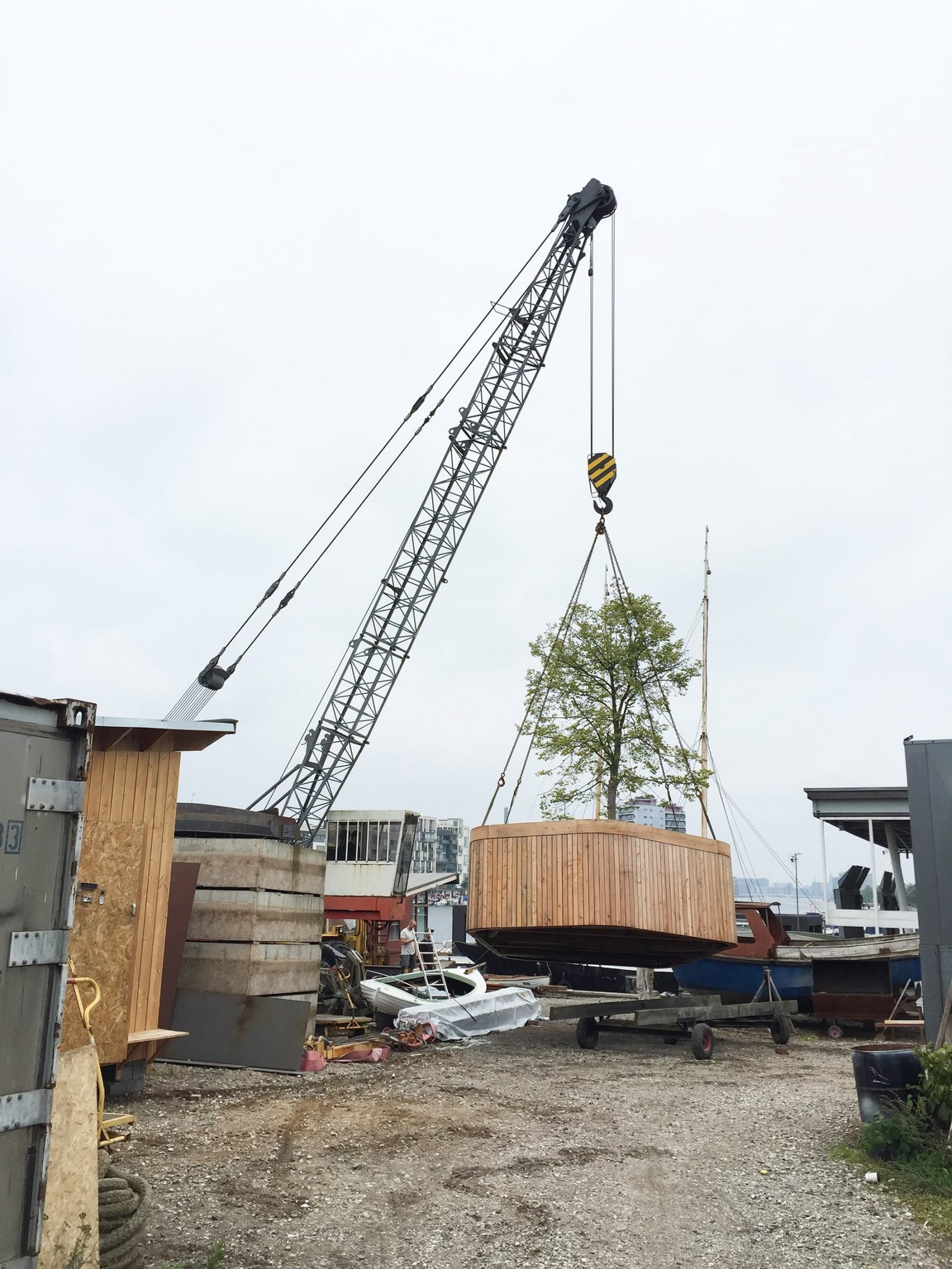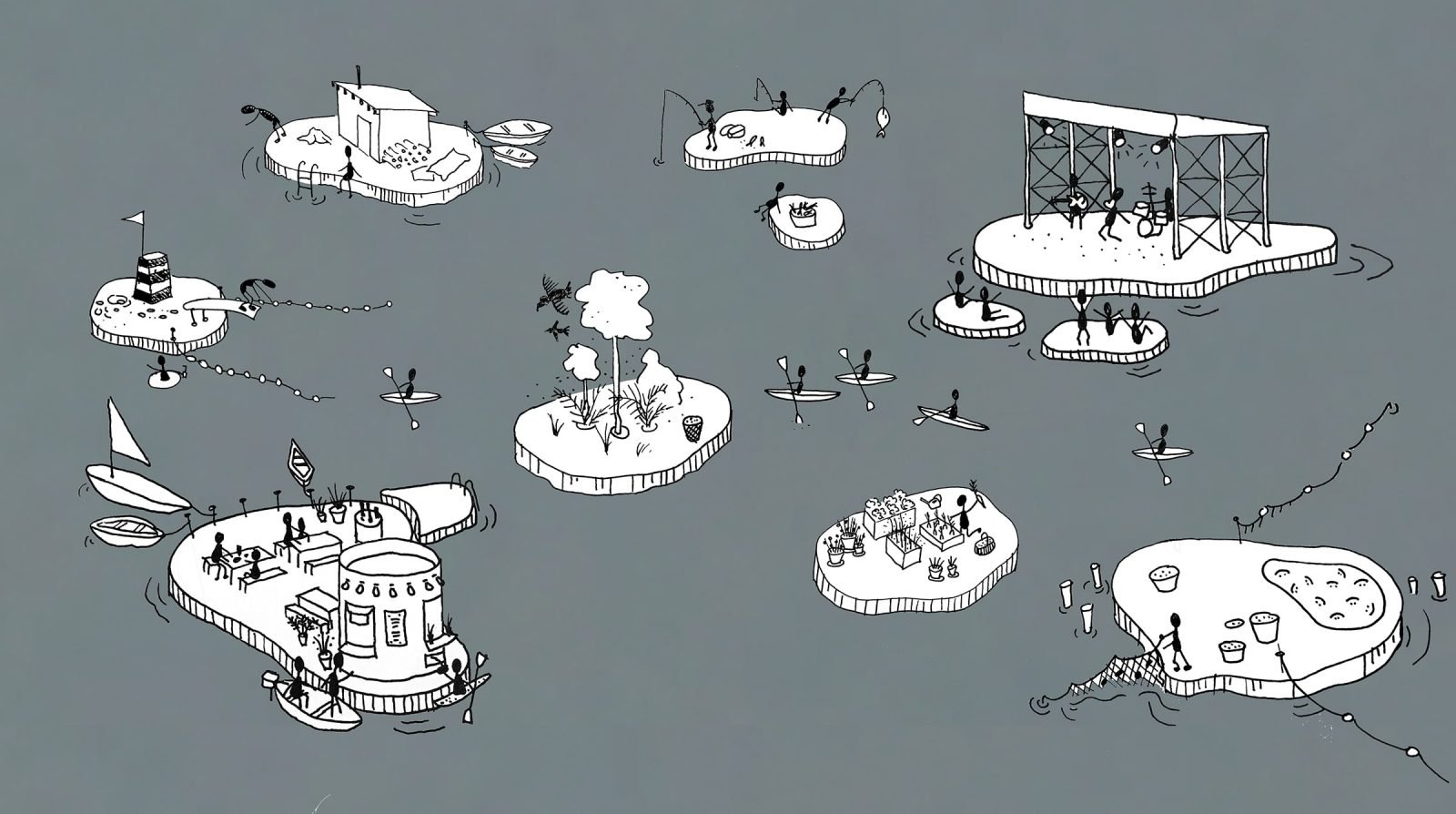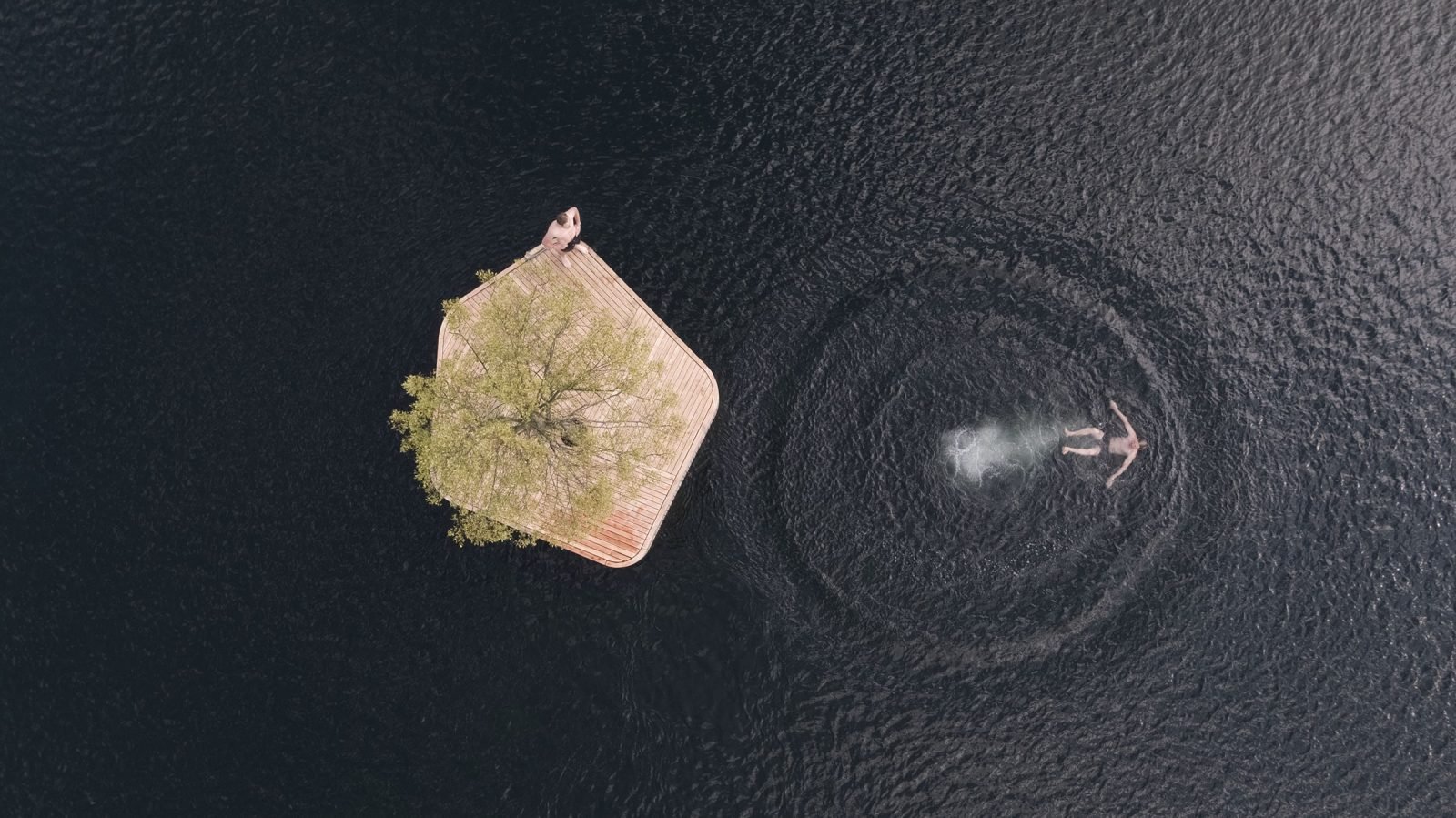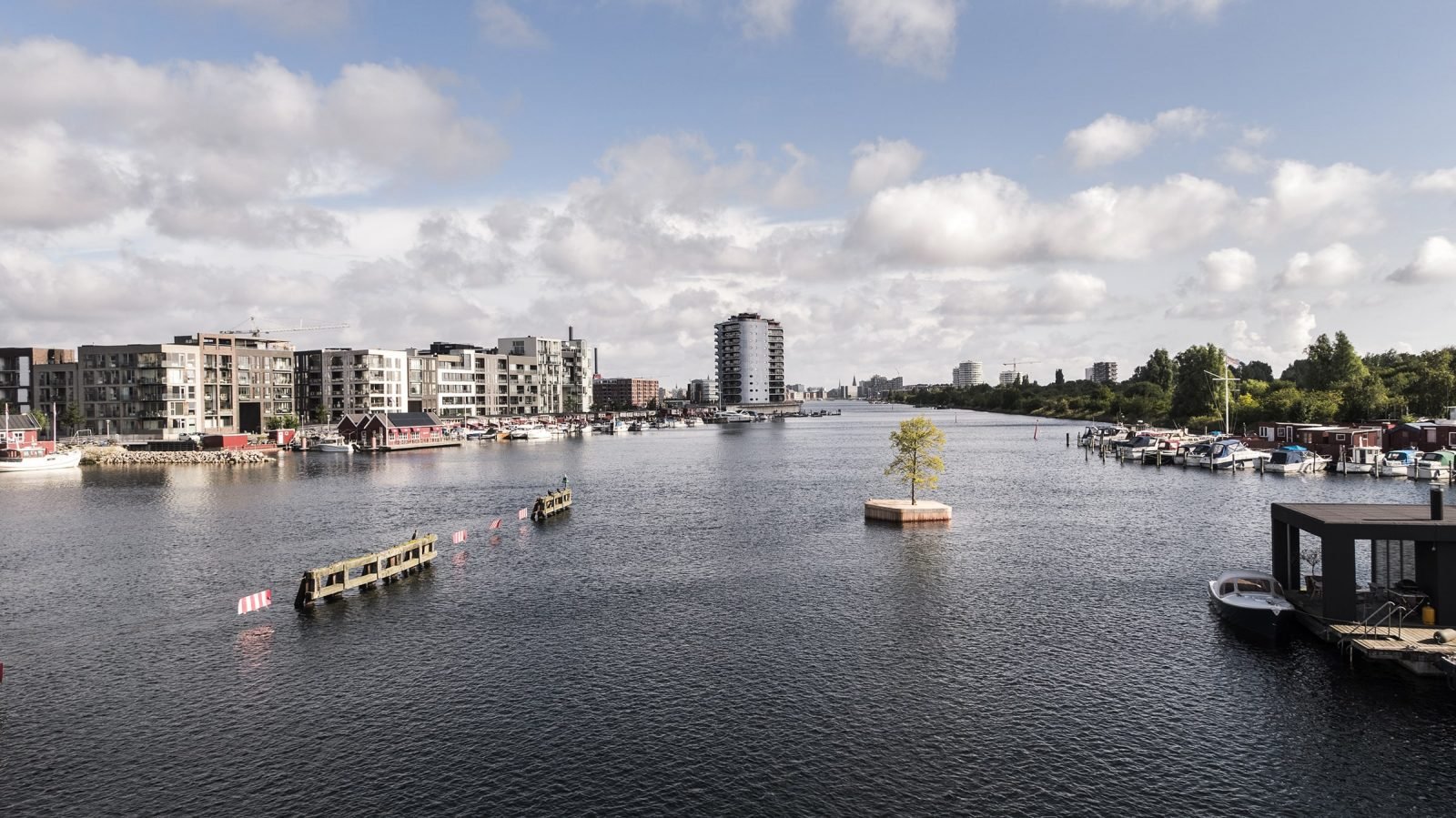Copenhagen’s New Public Spaces Are Modular and Can Float

Australian architect Marshall Blecher's and Danish architect Magnus Maarbjerg's prototype of a floating island is the first step in breathing life into Copenhagen's old harbour. With the hope of having nine floating islands ready within the next two years, a complete floating archipelago in the Danish capital will introduce a new type of public space. We sat down with Blecher in Copenhagen to talk about their ideas and inspiration.
A Sleek Floating Archipelago
Copenhagen Islands is an ongoing project that will become a waterscape of floating public spaces over the coming years. The project currently consists of a single floating island prototype, called CPH-Ø1 (after ‘ø’, the single letter Danish word for island). The 25 square-meter, wooden island with a six-meter tall linden tree in the middle was hand-made by Blecher and Maarbjerg themselves and floated around the Copenhagen harbour in the autumn of 2016 and in the summer of 2017. “The first Copenhageners who visited the island used it in different ways,” explain Blecher and Maarbjerg. “As a scenic destination while cruising around on their boat, as a rest stop with their dog, or as a barbecue spot.”

The prototype gave locals a taste of future plans. Within the next two years, a full archipelago in the harbour of Copenhagen should be completed and ready to visit. The project shows the potential of floating spaces and the future of floating communities in cities worldwide. For now, the ambition of Copenhagen Islands is to add new public spaces to the city which people can use as they like.
Created by Two Maritime Spirits
Blecher and Maarbjerg both grew up by the water. Back home in Sydney, Australia, surfing in the ocean and diving was a central part of Blecher’s daily life. On the other side of the world, Maarbjerg grew up on a ship in the harbour of Copenhagen. Living close to the water and owning a business there, his connection to the Copenhagen harbour never faded. The two eventually met in architecture school in Copenhagen and teamed up to start the Copenhagen Islands project.

The idea of Copenhagen Islands was born out of Blecher’s experience living on a self-converted, old wooden motorsailer from the sixties during his first year in Copenhagen. While he was living out on the water, he realized the harbour was undergoing change. “I got a sense straight away of this harbour life. It is slowly dying, but there is still a tradition of living on the water and a small community of people working on the harbour,” he explains.
The feeling of lively old harbours and long-standing floating communities is something that inspired Blecher. “Even though it is hard to grasp, communities that are floating on the water feel special,” he says, “I think everyone feels that. There is a reason why everyone is in love with Venice. There is something a little whimsical and poetic about these places.” Blecher sensed that the grit that is found in the free-spirited harbour communities needed to be preserved in order to have a balanced, social and vibrant city.

A Harbour Community for Everyone
Copenhagen’s harbour is located in the heart of the city. Copenhageners of all social classes and lifestyles pass through there on a daily basis. Blecher feels that “everyone in Copenhagen is connected to the harbour”. He experiences this when he cycles through the harbour in the morning, shoulder to shoulder with businessmen who are going to work and old free-spirits from the harbour area. Blecher feels that it is essential to keep the harbour universally accessible in order for the people of Copenhagen to remain connected to each other.
While he enjoyed living in the Copenhagen harbour, Blecher also realized that the changes he saw in the harbour were threatening its original character that he enjoyed. “With land around becoming more and more valuable, the harbour is starting to lack public spaces that keep the area alive.” Blecher draws inspiration from Amsterdam, a city that has managed to keep the water populated by people even under the strong forces of urbanization that Copenhagen is facing as well. In Amsterdam, he found both long-standing floating communities and newly built ones, proving that it is possible to develop new flourishing communities on the water. “It changes the city completely,” he says.

The Future of Copenhagen Islands
Introducing floating communities to a city is not a simple task. Besides the obvious legal hurdles, Blecher has noticed the stigma of floating communities on a daily basis. For visual reasons, floating harbour communities in many cities, like Sydney, Australia, were completely torn down in the past. Bad waste management and poor construction quality might still keep up this image in some cities, but with Copenhagen Islands, the hope is to create a visually stunning example that will have people re-consider living in the harbour. “With trends like micro-living and tiny houses, living on the water is something that more and more people in cities are getting interested in,” Blecher says. The challenge today is to make Copenhagen Islands more visible and popular in order for harbour communities to gain momentum once again.

Copenhagen Islands has grown in popularity and government funding is becoming available for the project. Overall, the response was great. Visitors used the island in various creative and unexpected ways, from hosting barbecues with friends to fishing sessions. It is this freedom and creativity that Blecher is enthusiastic about. In the end, Copenhagen Islands is about innovating public space. He concludes, “It’s about bringing back a bit of whimsy to the harbour. Something unusual, something unexpected.”



